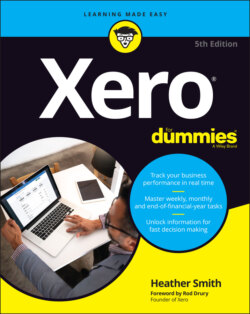Читать книгу Xero For Dummies - Heather Smith - Страница 89
Fixed assets
ОглавлениеOnly a user with Adviser status can tackle some of the processes related to fixed assets. To import fixed assets into Xero, follow these steps:
1 From the Xero Dashboard go to Accounting → Advanced → Fixed Assets and click on the Import button.To set up the Start Date, check out Chapter 14 (the Start Date is the date that you want Xero to start calculating depreciation on your registered fixed assets).The Import Fixed Assets window opens.
2 Make sure that the asset types in the file exist in Xero.To set up new asset types, see Chapter 14.
3 Select your preferred date format from the drop-down menu.
4 Click the Browse button to select the required file and then click the blue Continue button.For example, you could select the FixedAssetsImport.csv file from the DataReadyForImporting folder in the CONVERSION folder.Clicking the Import button opens the Import Fixed Assets window, which provides a report on the impending import process, and highlights the action can’t be undone.
5 Review the report integrity.If further editing of the fixed asset data is required, click the grey Back button and review the imported data file.
6 Once satisfied, click the Import button.The fixed assets are imported as a draft.
7 Review the imported fixed assets by clicking on the individual asset under the Draft tab and updating the details as required.See Chapter 14 for guidance on fixed asset details.
8 Once satisfied, a user with Adviser status can move the fixed asset from the Draft tab to the Registered tab by clicking the check box beside it and clicking the Register button.The asset is now a part of the Fixed Asset Register.
9 Check the details of the other imported fixed assets and register them by repeating Steps 7 to 8.
